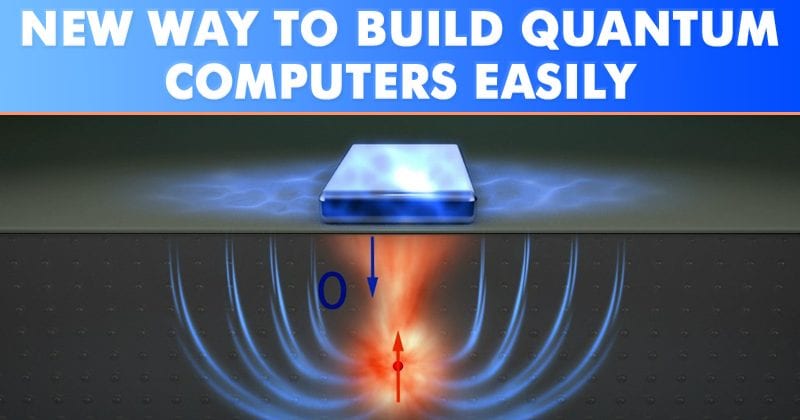For this purpose, laser-bound atoms, ion traps and sometimes the properties of superconductors are used. The problem is that there is still a lot of work is needed to be able to control these physical phenomena to such an extent that a large number of qubits can be put together. The strange rules of quantum mechanics make work difficult. Engineers from the University of New South Wales (Australia) have presented a radically new qubit design. It is based on a “flip-flop” system, which promises to turn future large-scale production of quantum chips into a much cheaper and simpler process than previously thought. The design has a great advantage. It works without having to place the atoms in a very strict position, as with other chips. In particular, it allows the qubits to be interlaced at distances of up to hundreds of nanometers. “It’s a brilliant design, and like many conceptual leaps, it’s surprising that no one would have thought of it before,” Andrea Morello, a co-author of the study and scientist at the Center for Quantum Computing and Communication Technology (CQC2T) said in a statement. The authors of the paper say that they have created a new way of defining the “spin” of the “qubit”, a property that is useful for the atom to function effectively as a unit of memory or bit. This new mode allows the qubit to be controlled by electrical rather than magnetic signals, which has the great advantage that the qubit is much easier to distribute and locate inside a chip.
The problem of size
This allows overcoming a great limitation in the design of quantum computers: size. The reason is that it is essential to increase the number of “qubits” that can accumulate, and it is also usually necessary that all these will be very close to one another: conventionally at a minimum distance of 50 atoms, or between 10 and 20 nanometers. This is the only way for them to enjoy the property known as “quantum entanglement,” which is indispensable for quantum computation to appear. This implies that you have to accumulate thousands or millions of “qubits” in a small space and also couple them to all the necessary control systems. The only solution is that they have a miniature size of just a few nanometers. At the moment the technology is not able to achieve it. That is why this “flip-flop” design offers a new way of improving computers, as it offers the possibility of increasing the maximum distances between qubits without losing interlacing. The tech giants like IBM and Google have managed to build quantum computers with the highest number of “qubits” so far with superconductors and ion traps. But all at the cost of using a lot of space, which is a limit if in the future is intended to reach the thousands or millions of qubits. “Our new approach is at the ideal intermediate point,” said Andrea Morello, co-author of the research. “It is easier to manufacture than atomic scale devices, but it still allows us to place millions of qubits to one square millimeter.”
The “trick” of the chip
The trick of this device is that it harnesses both the nucleus and the electron of the atoms that make up the qubit. The researchers take advantage of a charge difference between the nucleus and the electron and allow both to interact at a distance of up to 1,000 nanometers. “This means that we can now place” qubits “of an individual atom far away than previously thought it is possible,” explained Morello. According to many researchers, the design of quantum computers is the space race of the twenty-first century. The company is really complex, but promises to create computers much more powerful than the current ones and could be used in multiple applications such as health, chemical, defense, space or transport. So, what do you think about this? Simply share your views and thoughts in the comment section below.
Δ


